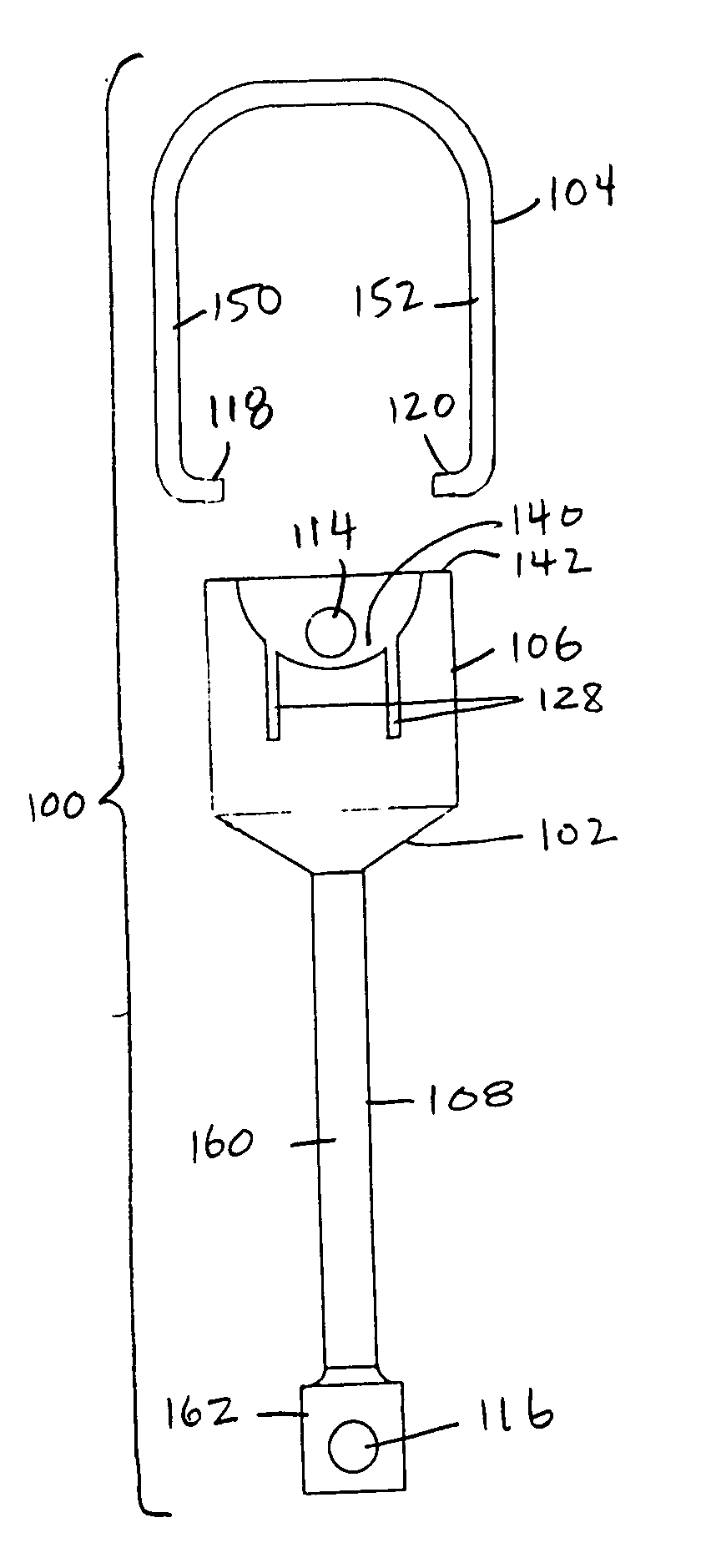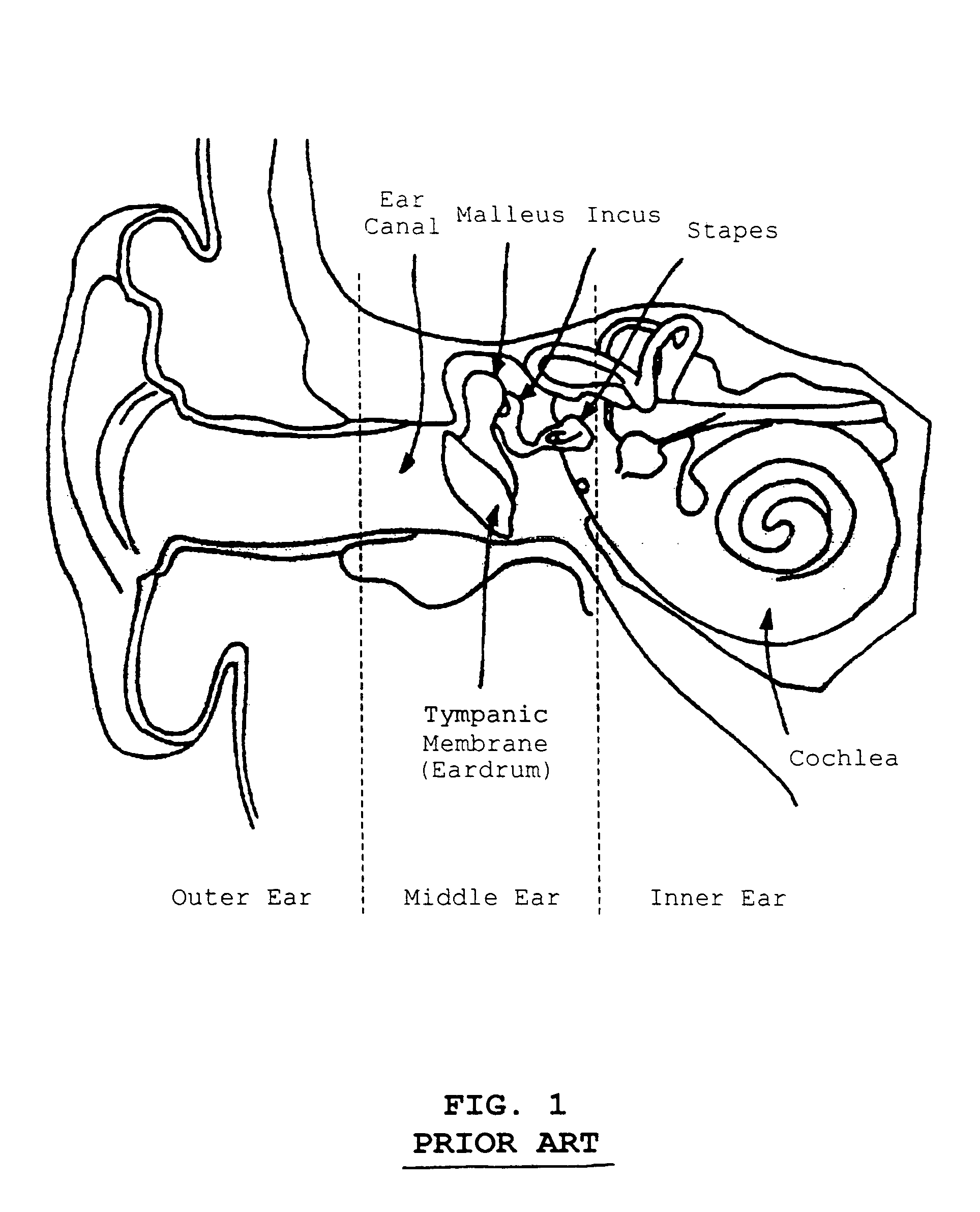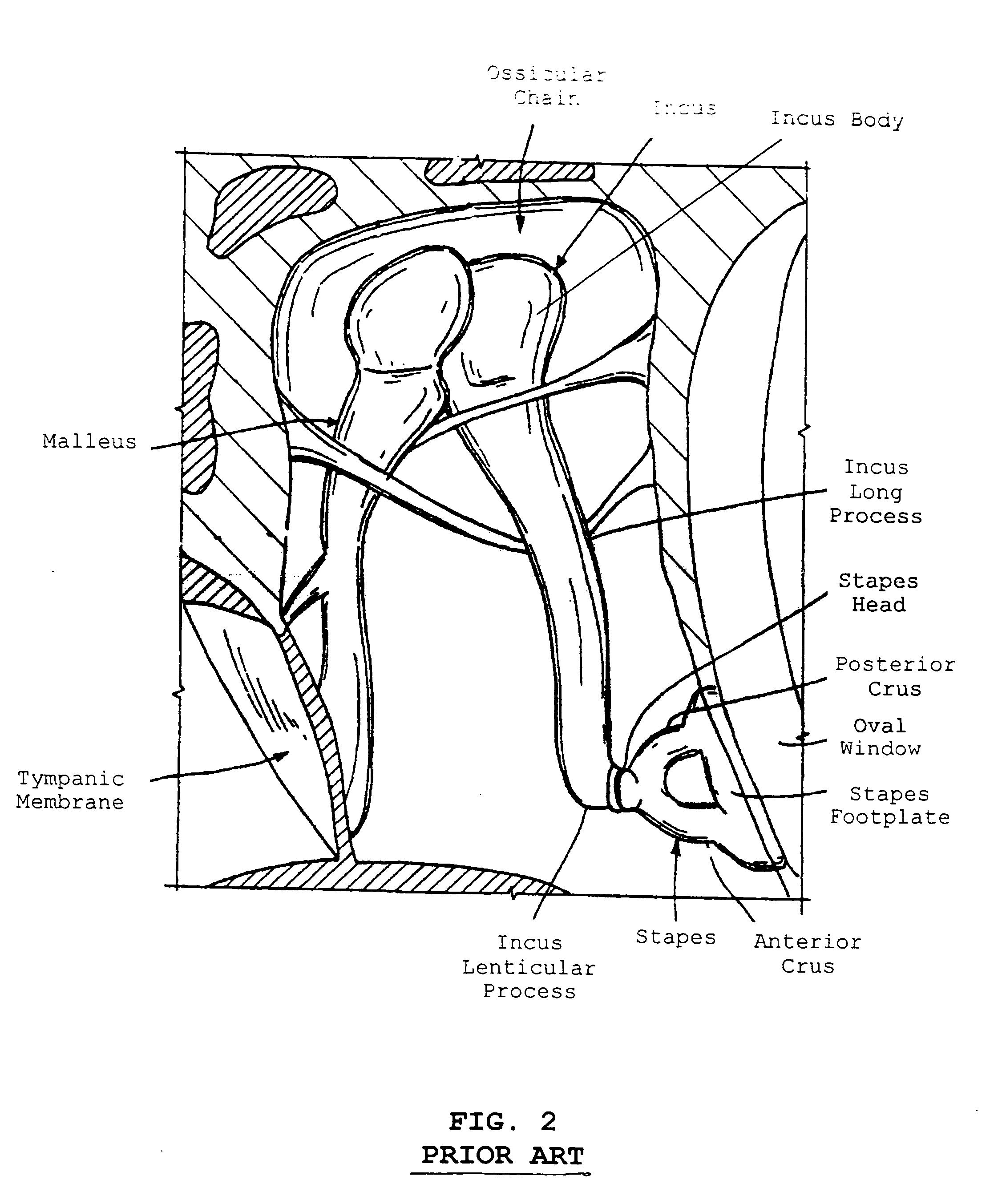Stapedial prosthesis and method of implanting the same
- Summary
- Abstract
- Description
- Claims
- Application Information
AI Technical Summary
Benefits of technology
Problems solved by technology
Method used
Image
Examples
Embodiment Construction
[0044] Referring to FIGS. 7 through 10, a preferred embodiment of a stapedial prosthesis 100 includes a body 102 and a bail handle 104. The body 102 is preferably constructed from commercially pure Grade 2 titanium, and is further defined by a closed-bottom bowl shaped cavity, termed the bucket 106 (or well), which tapers down to a shaft 108 (also termed a stem or a rod). The bucket 106 of the body 102 is sized to accept the long process and lenticular process of the incus. The body 102 of the prosthesis 100 preferably defines four holes 110, 112, 114, 116, each designed for a specific purpose as now described. The two diametrically-opposed holes 110, 112 near the bottom of the bucket 106 are receptacles (bail insert openings) for receiving ends 118, 120 of the bail handle 104, described below. The hole 114 located at the rear of the bucket 106 near the rim 142 is intended for positioning the prosthesis 100. That is, a surgeon can insert a pick 200 and turn the prosthesis 100 to ach...
PUM
 Login to View More
Login to View More Abstract
Description
Claims
Application Information
 Login to View More
Login to View More - R&D
- Intellectual Property
- Life Sciences
- Materials
- Tech Scout
- Unparalleled Data Quality
- Higher Quality Content
- 60% Fewer Hallucinations
Browse by: Latest US Patents, China's latest patents, Technical Efficacy Thesaurus, Application Domain, Technology Topic, Popular Technical Reports.
© 2025 PatSnap. All rights reserved.Legal|Privacy policy|Modern Slavery Act Transparency Statement|Sitemap|About US| Contact US: help@patsnap.com



